4 Things to Know to Protect Yourself & Your Family from Secondhand Smoke
So far in the U.S., over half of states have comprehensive smokefree policies on the books… and they’re already seeing the benefits. The health of their citizens is improving, and their economies are improving, assuring that children’s futures in their states shine a little brighter.
Oklahoma, on the other hand, has yet to take action on becoming 100% smokefree. Smoking is still allowed in many places such as bars, clubs, and bingo halls — as well as restaurants and workplaces that meet certain ventilation requirements. Also, Oklahoma is one of very few states with preemption statutes prohibiting adoption of smokefree policies at the community level. In other words, it’s impossible for local communities to implement tobacco restrictions stronger than the state law.
Until we strengthen Oklahoma tobacco policies, our health issues and mortality rate will continue to climb.
Oklahoma’s tobacco policies remain out of step with our neighbors’ and the current science, and the longer we wait to catch up, the further behind we fall. See how Oklahoma stacks up against Colorado, Kansas and New Mexico — our neighbors with the lowest tobacco prevalence.
Kansas
Kansas’ adult and high school smoking rates are lower than Oklahoma’s. Part of this can be attributed to the state’s ban on smoking in worksites, bars and restaurants, as well as personal vehicles when children are present. Another factor comes from several localities adopting an ordinance that raised the legal minimum age to purchase tobacco from 18 to 21. This ordinance, dubbed “T21,” limits access for young adults to cigarettes. It decreases their chances of getting addicted because if kids don’t start smoking by age 18, they are unlikely to ever start. Five states have passed this policy, and at least 260 cities and counties across the U.S. have also enacted this new measure.
Kansas’ smokefree policies and tobacco prevention efforts are saving lives and saving money.
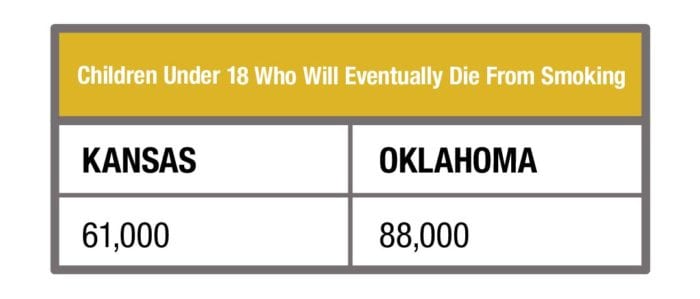
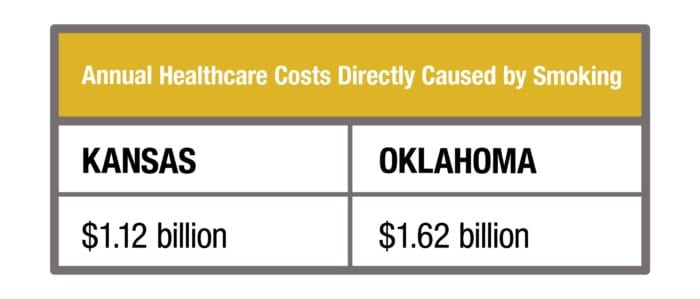
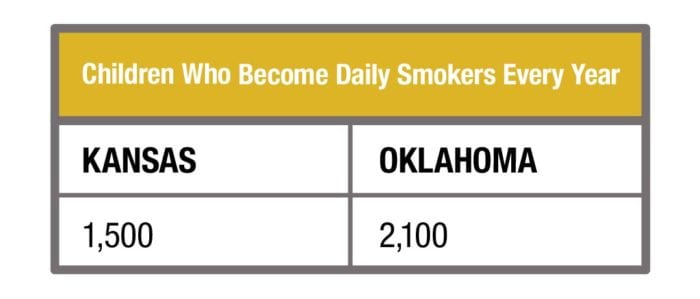
NEW MEXICO
Like Colorado and Kansas, New Mexico has also banned smoking in worksites, bars, restaurants. Plus, they have comprehensive smokefree policies in place, and no preemption laws. And to protect their citizens even further, New Mexico has recently proposed increasing their cigarette tax by $1.50. If the proposal passes, the tax would jump to $3.16 a pack, over three times Oklahoma’s current cigarette tax.
Research shows that tobacco tax increases are one of the most effective ways to reduce tobacco use, especially among kids.
When cigarette prices rise, tens of thousands of people quit smoking — and countless children never start.
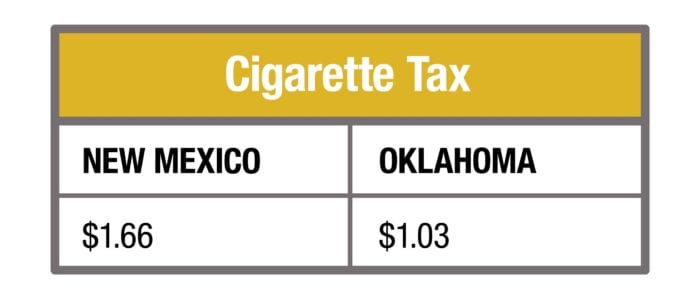
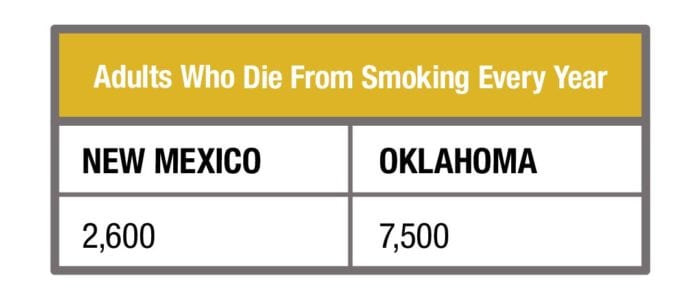
COLORADO
Colorado has the lowest adult and high school smoking rates among Oklahoma’s bordering states. This is a reflection of both the state’s culture and their efforts in tobacco prevention.
Colorado has comprehensive smokefree policies, as well as policies that ban smoking in worksites, bars and restaurants, as well as personal vehicles when children are present. And with no preemption, local governments across the state are allowed to enact their own regulations regarding youth access to tobacco.
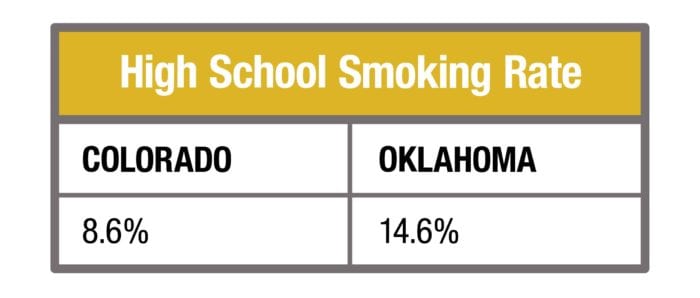
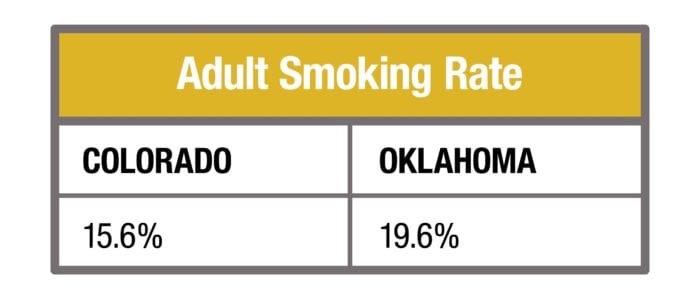
Clearly, Colorado’s tobacco prevention efforts are making an impact.
When it comes to tobacco regulations by state, we can’t let Oklahoma fall behind our neighbors and the rest of the nation. With some simple changes to our tobacco policies, thousands of lives and dollars could be saved.
So, what can you do about it? More than you think.
Show your support for stronger tobacco policies in Oklahoma, and learn how you can take an active role in your community.
Sign up for our e-newsletter to receive tobacco control updates in Oklahoma.









